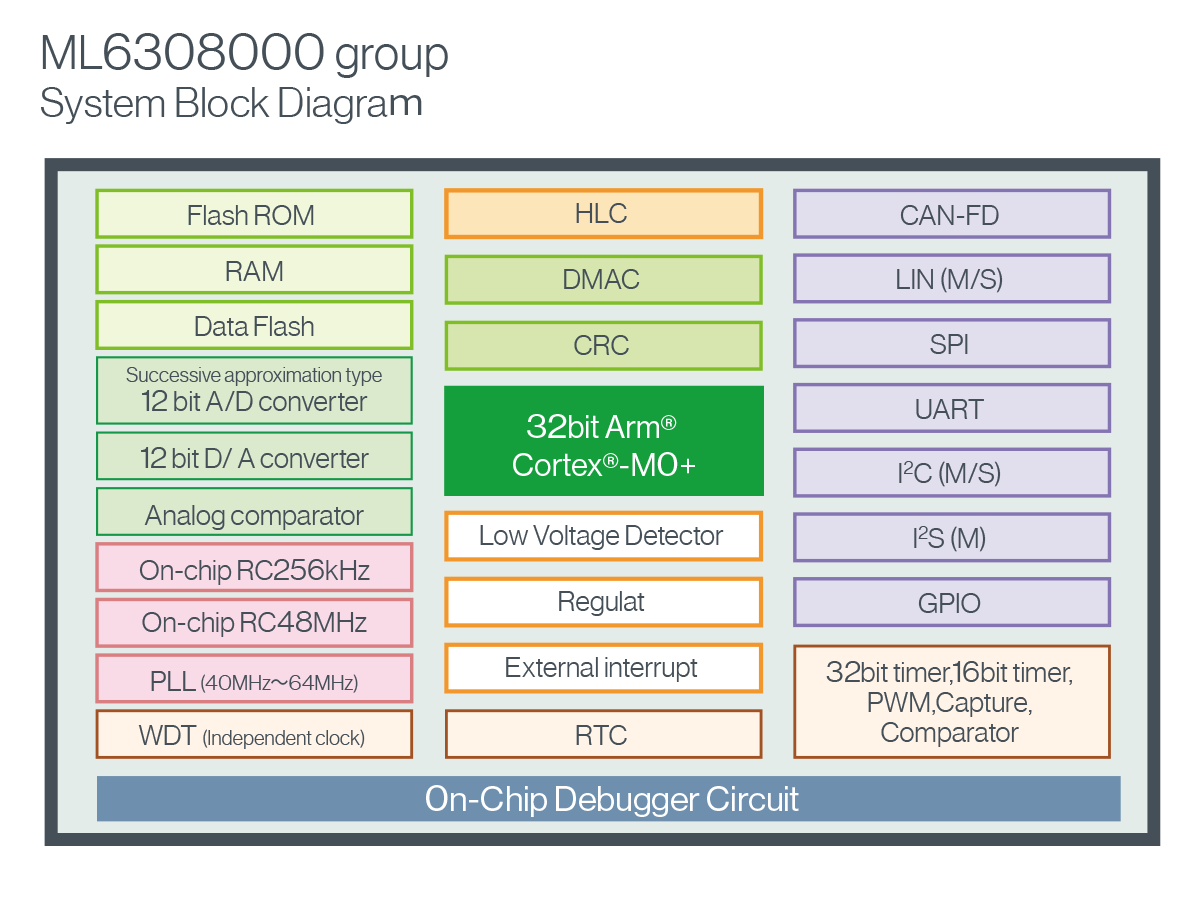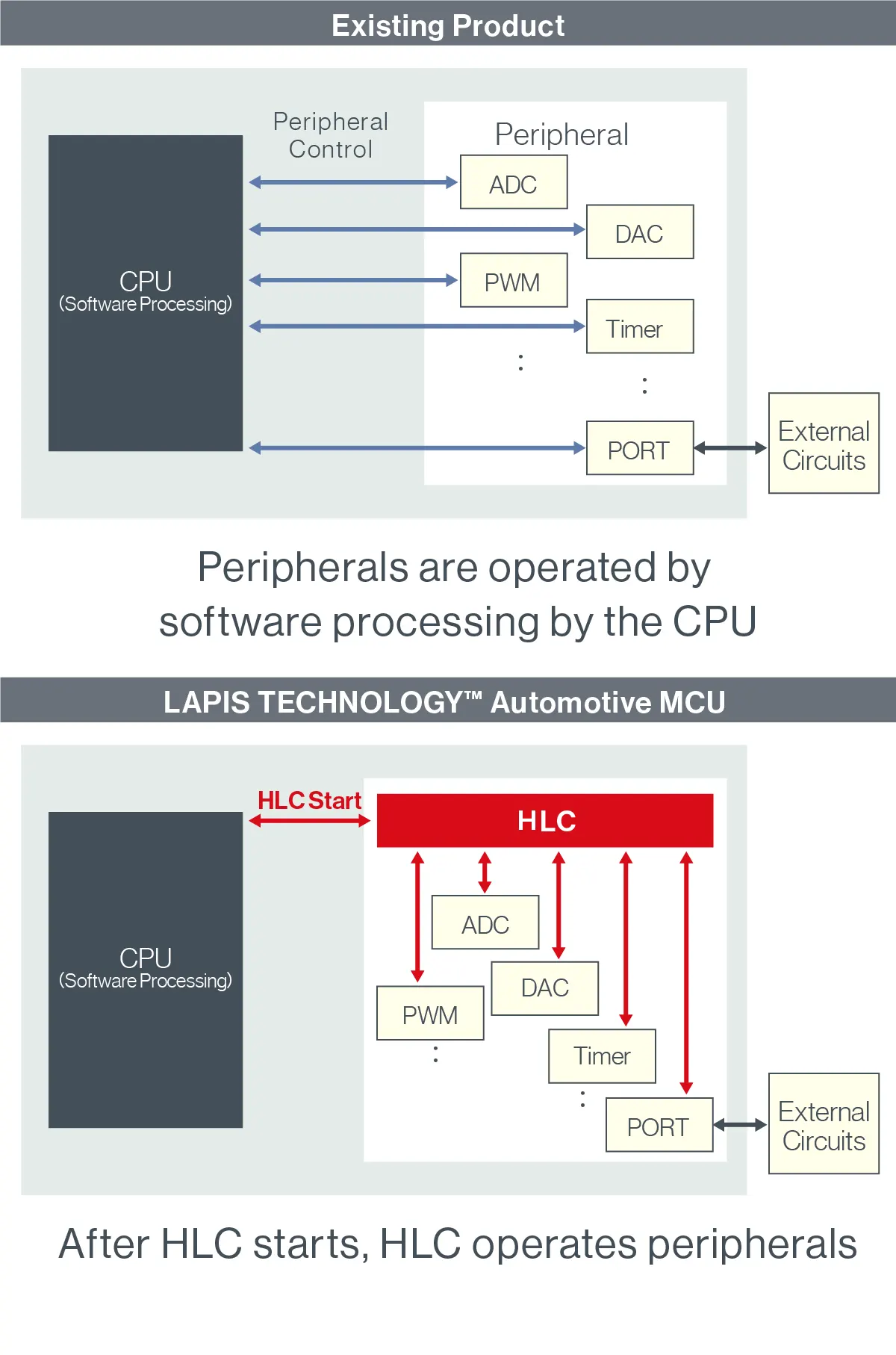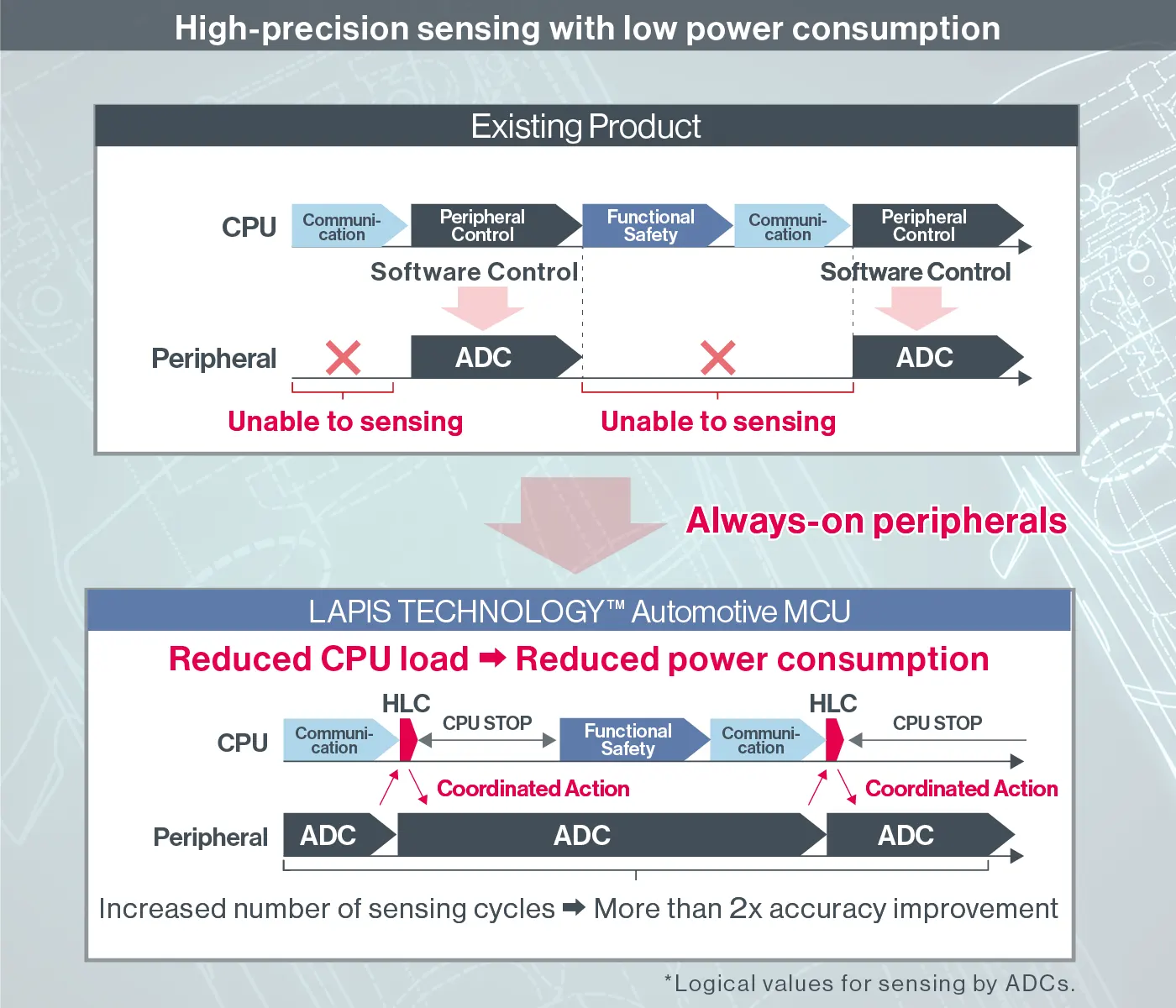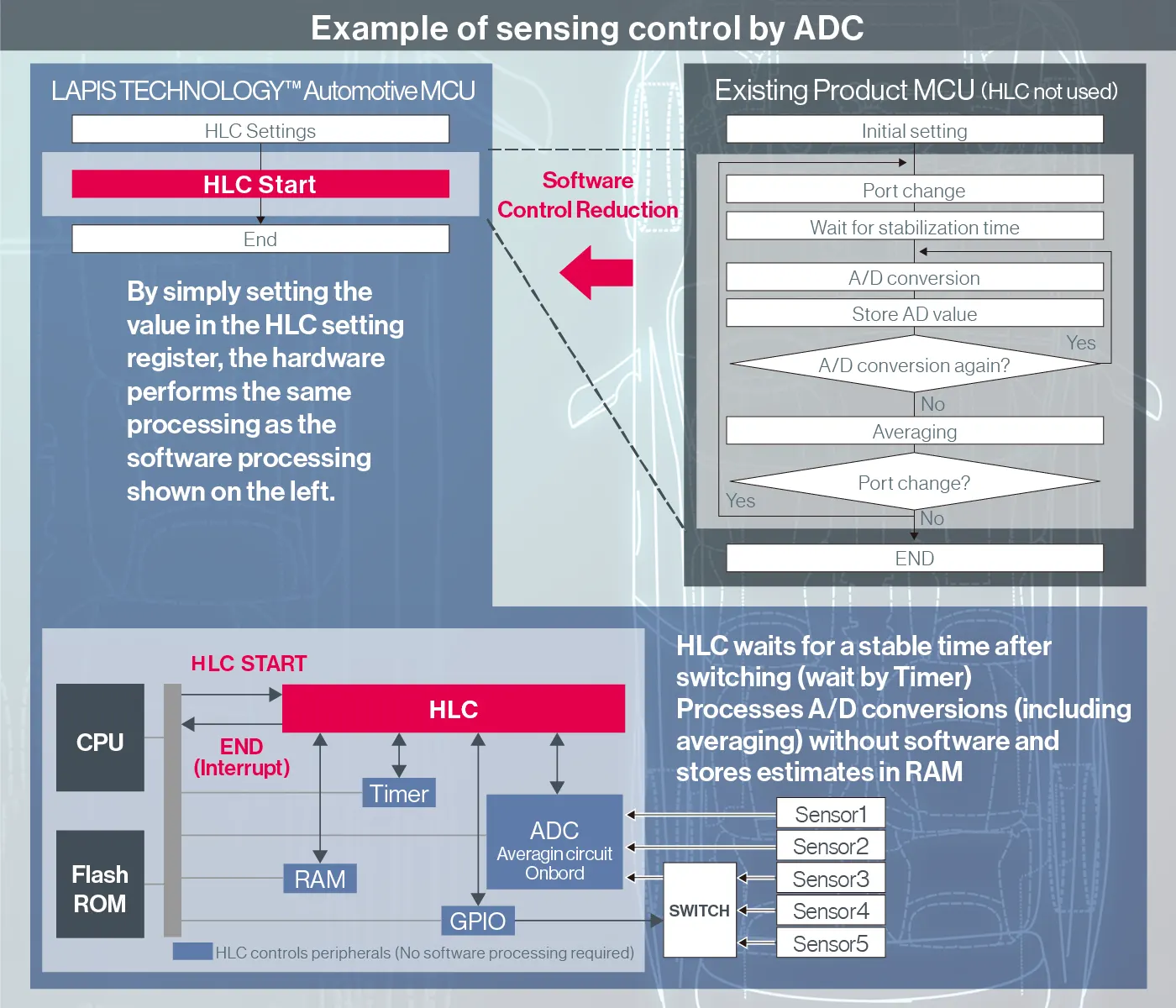The ML63Q8000 group which is equipped with Arm® Cortex®-M0+ is an automotive 32bit MCU.
These automotive MCUs are equipped with a unique sequencer HLC (Hardware Linkage Controller) that enables linked operation of peripherals without software control, enabling high-precision control and sensing, making it ideal for in-vehicle sensor/actuator control. This HLC contributes to the realization of high-precision control and sensing while suppressing the increase in the cost of MCUs for edge-side ECUs.
It also supports high-speed communication protocol CAN-FD and can support ASIL-B of functional safety according to ISO26262.
Easy Part Finder
Parametric Search
Supporting Information
Automotive MCUs(32bit)
HLC: Short for Hardware Linkage Controller, HLC is a function that enables interoperation between peripherals without using LAPIS TECHNOLOGY™ ’s proprietary CPU.
Overview
The ML63Q8000 group is a 32-bit MCU for automobiles equipped with Arm® Cortex®-M0+.
This group is integrated with program memory(Flash memory), data memory(RAM), data Flash and rich peripheral functions such as the multiplier/divider, CRC generator, clock generator, CAN, LIN, SPI, UART, I2C, I2S,12bit successive approximation type A/D converter, 12bit D/A converter, timer, general purpose ports, low voltage detector, and so on.
In addition, this series of MCUs is equipped with a unique sequencer HLC (Hardware Linkage Controller) that enables linked operation of peripherals without software control, enabling high-precision control and sensing, making it ideal for in-vehicle sensor/actuator control.
It also supports high-speed communication protocol CAN-FD and can support ASIL-B of functional safety according to ISO26262.
HLC (Hardware Linkage Controller) unique to LAPIS TECHNOLOGY™ can perform linkage operations between peripherals such as A/D converters and PWM without software processing by the CPU.
Generally, when a peripheral with a built-in MCU is operated, software processing by the CPU is required for the peripheral to be operated.
On the other hand, when HLC is used, the target peripheral is set to HLC before starting the operation, and instructions are given to HLC to start the operation.
This causes HLC to operate the peripheral according to the configuration. During operation, no software processing is required for the peripherals configured in HLC.
Product Features
Feature 1Reduced CPU load by enabling peripheral linkage operation high-precision sensing with low power consumption
HLC can operate peripherals without a CPU so that the burden on the CPU can be reduced and power dissipation can also be reduced.
Since the peripheral can be always operated even if the CPU is stopped, the number of senses is increased to enable high-precision measuring.
Feature 2Reduced software development load
"LAPIS TECHNOLOGY™" is a trademark or a registered trademark of ROHM Co., Ltd.






